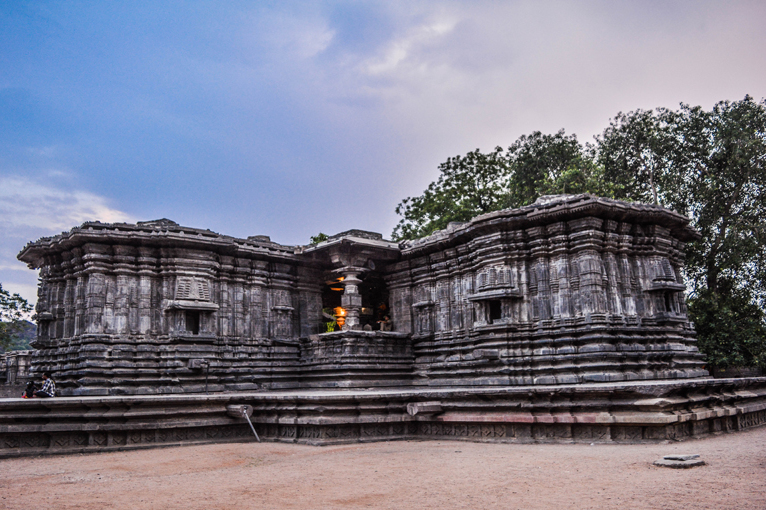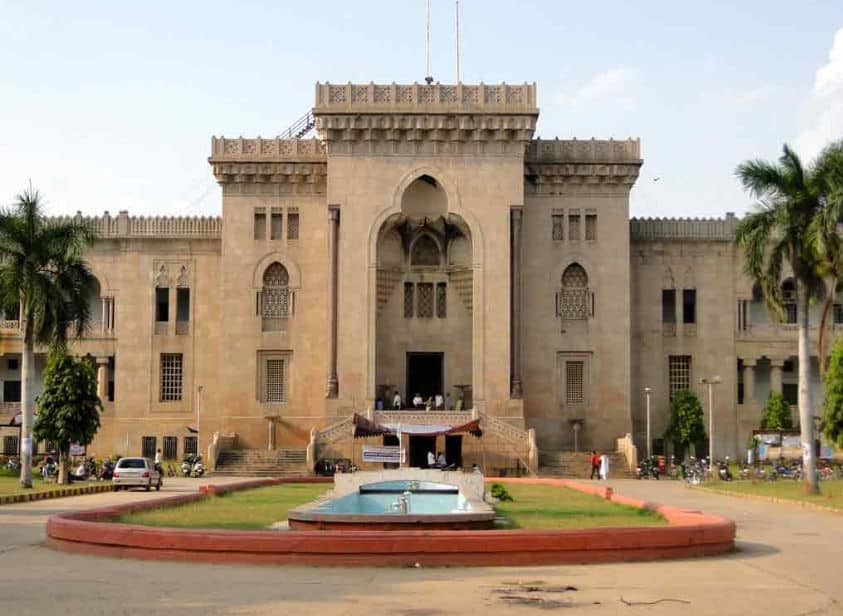
Prof. Bhangya Bhukya
University of Hyderabad
Email: bbhangya@gmail.com
After the last general election, Bharatiya Janatha Party and its mother organisations (RSS, VHP, etc.) are eyeing Telangana. A spurious propaganda is in circulation that BJP going to make a dent in Telangana very soon, at least by next assembly elections. Considering the large Muslim population in the state, BJP must be thinking that it would be easy to polarise the voters on communal basis. One has to understand its week-long programme to celebrate September 17th as part of this political agenda.
It appears that they did not learn anything from their Kerala experience in the last elections, where there is presence of large Muslim and Christian population and a strong trend of left political tradition. Telangana also has a similar social composition and strong left political leaning from the days of the armed peasant struggle. So it is possible that BJP would receive same response in Telangana that they received in Kerala. Importantly Telangana has an altogether different historical tradition from the beginning of the civilisation. The Telangana society is founded on the fabrics of heterodox culture that opposed the north Indian cultural and political imperialism all through the history.
Heterodox environment of Telangana
The heterodox environment of Telangana which is characterised as upland plateau with sandy soils and rocky landscapes did not allow the formation of imperial politics in the region. It had its own political system which is rooted in self-determinism and non-imperialist ethos. The first north India imperialism came to Deccan in form of Mauryas. Before the emergence of Satavana dynasty, the Mauryan Empire ruled some parts of Deccan. However, we have very scanty evidence not only on their conquest of Deccan but also on the nature of their rule in this part of India. Whether the Mauryans ruled Deccan directly or had a symbolic sway over it leaving power with the local rulers. We do not have any evidence of Mauryan rule in Telangana. Similar is the case with the Gangat Valley Gupta imperialism. The Gupta rulers conquered some kingdoms in the Deccan, but they could not merge them into their empire. They left these kingdoms with their respective rulers and asked them to accept symbolic suzerainty of Gupta Imperialism.

Historical facts
The Sultans and Mughals also miserably failed to expand their empires in Deccan. The Delhi Sultan after the conquest of Kakatiyas could hold their sway over the Deccan only for about 24 years that is from 1323 to 1347. The Deccan Sultans, in collaboration with local Hindu chiefs, challenged the Delhi imperialism and liberated Deccan by forming Bahmani Sultanate in the region. A similar politics was also repeated when the Mughal emperors conquered Golkonda in 1687. After 1707, the Mughal rule was negligible in Deccan and thrown out of the region completely with the formation of Asaf Jahi dynasty in 1724. Deccan was also largely free from the British Imperialism.
It is evident from the history that the Telangana was always a politically charged region in which many Deccan dynasties took their birth. All the Deccan dynasties start from Satavahanas to Asaf Jahis based their seat in Telangana and rose into power. Telangana/Deccani rulers also challenged the north Indian imperial politics and maintained their own political identity. Deccan was evolved into three politico-cultural regions by the thirteenth century, namely Maratha under Yadavas of Devagiri, Kannada under the rule of Hoyasalas and Tilinga or Telangana under the rule of Kakatiyas. This formation was largely based on language. Bahmanis had tried to unite the Deccan by creating an overarching culture called Deccani which was Indo-Persian and secular. Unlike the Delhi Sultan, the Deccan sultans had promptly adopted the local culture and deepened new culture without disturbing its core culture. It is important to note that no Deccan ruler imposed jizya tax. The jizya was imposed in Deccan only by Mughals for a short period. The Deccan rulers had frequently asserted their power in their respective region based on its politico-cultural foundation.
The Deccan rulers maintained very tactical relations with the Delhi rulers. From the beginning of history, it was a general practice among the Deccan rulers that they used to surrender to the north Indian imperial power when it was strong and when it got weakened they asserted their power. The north Indian imperial rulers understanding the autonomous tendencies of the Deccan rulers did not insist them to merge their territories into their empires. Instead, the imperial powers allowed the Deccan rulers to rule their territories even after their defeat in war. They were just demanded to accept imperial suzerainty and to pay annual tributes regularly. But those suzerainties were also symbolic. Deccan rulers ruled independently. Those empires which tried to merge Deccan into their territories did not lost for long. This is true in the case of Mughal rulers who tried to merge the Deccan into their empire. After they swallowed Deccan, the Mughal rulers confined to surrounding of Delhi, as all the regional powers challenged their imperialistic politics and asserted their power in their respective territories. Any attempt to erase the diversities of Indian regions would see a similar fate. It is a good lesson we learn from history.
No place for “imperialism” and “repressive politics” in Telangana
Resisting the imperialism and repressive politics is there in Telangna from the early times. This tendency is shaped with the spread of Buddhist, Veera Saiva and Sufi tradition in the region. The Buddhism and the Jainism were widespread in the early Telangana and had a profound impact on the people till eleventh century. Dhulikatta, Phanigiri, Kondapur, and Badankurti still stand examples of this tradition in Telangana. The heterodox ideas spread by Buddhism and Jainism was further carried out by the Veera Saiva sect from the twelfth century which challenged Aryan Vaishnava cult boldly. Castes and communities of Telangana articulated their cultural and spiritual life around the Veera Saivism. It is evident from the presence of huge number of Saiva temples in the region. Only the last Rachakonda Velama chiefs brought Vaishnavism to Telangana because of the Vijayanagara rulers’ influence on them. Otherwise there is no place for Vaishnavism in Telangana which rooted in Aryan culture. Kamarelli Yellana, Mallanna, Rajanna, Veera Bhadrudu etc who spread Veera Saivism are being worshiped by the Telangana people.
Sufism is an added flavor to Telangana culture. The Sufi saints who opposed the conservative values of Islam were welcomed by the Telangana people, as they were preaching heterodox social and cultural values. It was because of these values a large number of lower castes embraced Islam in Telangana. One should also note that unlike North India there was no forced conversion in Deccan. Much before the political inventions of the Delhi Sultans, the Sufi saints arrived in Deccan and attracted the masses with their preaching. The widespread veneration of Dargahs built over graves of Sufi saints by both Muslims and Hindus exemplifies their impact on Telangana society.
Communal politics in modern times
The question is now how the heterodox and secular Telangana trapped into communal politics in modern times. Hyderabad has been particularly stigmatized as a communal zone. Yet, one has to see it as a politically designed programme. Communalising Hyderabad is communalizing Muslims, therefore brutally suppressing Muslim voices.
If we go into the history of modern communal politics in Telangana it did not come from within, but it came from outside. When whole India was rotting in communal politics from 1920s, Telangana was completely free from it. The first communal riot in the region was Dhulpet incident of 1938 in which a relative of Bahadur Yar Jung (Secretary of the Majlis) was killed by Arya Samaj activist from Marathwada. This incident triggered tension among the Muslim community and led them to organize politically. But it was Maratha Araya Samajists and members of other Hindu organisations who were aggressively organizing against the Muslims. During the fall of Hyderabad it was these groups who were leading the communal riots on the Marathwada border districts of the Hyderabad state. Of course Congress nationalist of these border districts also played equal role in those riots.
After the merger of Hyderabad into Andhra, the communal tension in Hyderabad city had taken a different shape. The revelry among the Congress leaders was mainly responsible for the riots from the late 1970s. The tension between the communities was used by these leaders particularly Andhra leaders to pull down the governments of their party. The fact that there used to be some tension during the Ganesh and Durga and Muharram celebrations in the city, particularly in Dhulpet and Hussaini Alam areas. The Hindu celebrations were organized by the Marwaris, Gujaratis and local Yadav communities with the help of BJP and its mother organizations. And these processions would often take communal turns with the entry of the unemployed political leaders. There is a parallel to this in the present context. Today, those who are inviting BJP or joining BJP are unemployed political leaders without realizing that the people of Telangana do not welcome such politics. They see BJP as another political opportunity but they should understand that BJP is not simply a political party but a politico-cultural philosophy and movement founded on the Aryan Hindu cultural imperialism.
It is evident from history that the heterodox and secular fabrics of Telangana had kept its uniqueness intact. And it is this uniqueness that stood against the imperialist and oppressive politics of north India. In one sense Telangana people are very choosy and selective when it comes to adoption of new values. They do not adopt any new value blindly or without using their rationality. Only this tendency of the people would save Telangana from the ongoing attacks by the Aryan Hindu cultural imperialism. Embracing the Aryan Hindu cultural imperialism in the region would lead to loss of uniqueness of Telangana. And, that would be the end of Telangana legacy.

